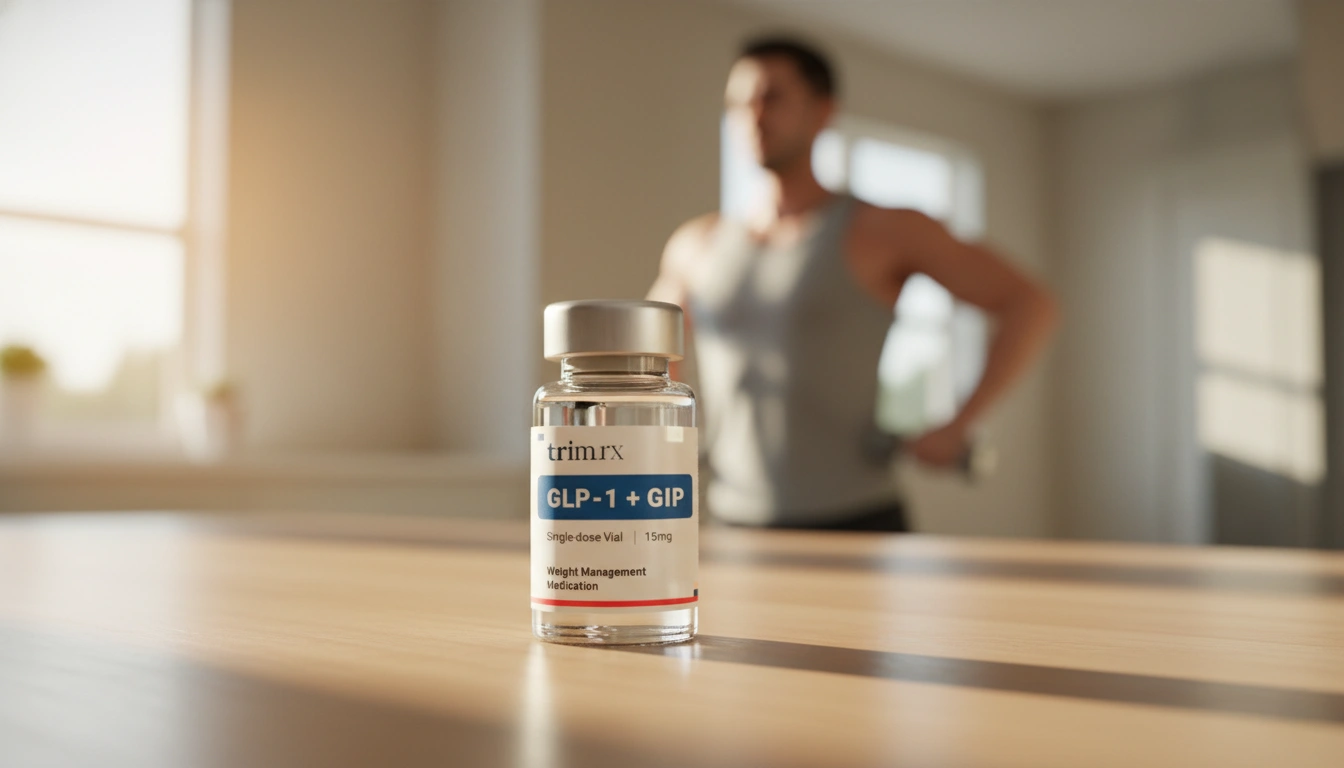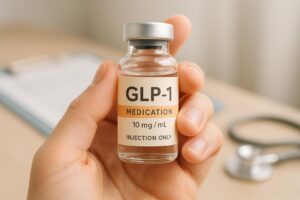What Foods Should You Avoid While Taking GLP-1?

When embarking on a weight loss journey, understanding the relationship between what we eat and how it affects our body is crucial. This is especially true for those using GLP-1 (glucagon-like peptide-1) medications, such as Ozempic® or Mounjaro®. These medications have gained attention for their ability to support weight loss and control blood sugar levels, but they also require careful consideration of dietary choices.
Did you know that the foods you consume can significantly influence not only the effectiveness of GLP-1 medications but also the side effects you may experience? With that in mind, our goal in this blog post is to explore the types of foods you should avoid while taking GLP-1, as well as the reasons behind these recommendations. By the end, you will have a better understanding of how to navigate your diet while on these medications, making your weight loss journey smoother and more effective.
In this article, we will discuss:
- An overview of GLP-1 medications and their effects on the body.
- Foods to avoid to minimize side effects and maximize effectiveness.
- Suggestions for alternative food choices that complement your treatment.
- Tips for maintaining a balanced diet while taking GLP-1 medications.
Together, let’s delve into the essential aspects of eating well while using GLP-1 medications.
Understanding GLP-1 Medications
GLP-1 medications are designed to mimic the action of the natural hormone GLP-1, which is produced in the intestines after eating. This hormone plays a vital role in regulating appetite, blood sugar levels, and digestion. GLP-1 medications work by stimulating insulin release, inhibiting glucagon secretion, and slowing gastric emptying, which helps you feel fuller for longer periods.
While these medications can be a powerful tool for managing weight and blood sugar levels, they can also lead to gastrointestinal side effects, including nausea, vomiting, and diarrhea. Understanding how your diet can impact these effects is essential for making the most of your treatment.
Foods to Avoid While Taking GLP-1
1. High-Fat Foods
High-fat foods can be particularly challenging for individuals taking GLP-1 medications. Since these medications slow down gastric emptying, consuming fatty foods can exacerbate feelings of nausea and bloating. Foods to avoid include:
- Fried Foods: French fries, fried chicken, and doughnuts are not only high in calories but also take longer to digest.
- Fatty Cuts of Meat: Bacon, sausage, and certain cuts of beef can increase the likelihood of gastrointestinal discomfort.
- Creamy Sauces and Dressings: Rich sauces can add unnecessary fat and calories, potentially worsening side effects.
2. Sugary Foods and Beverages
Foods high in sugar can lead to rapid spikes in blood sugar levels, which counteracts the benefits of GLP-1 medications. Additionally, sugary foods often lack nutritional value. Consider limiting:
- Candy and Sweets: These can lead to increased cravings and do not provide lasting satiety.
- Sugary Drinks: Sodas, sweet teas, and fruit juices can add empty calories and may contribute to gastrointestinal issues.
- Pastries and Desserts: Baked goods are typically loaded with sugar and unhealthy fats.
3. Starchy Vegetables and Fruits
Certain starchy vegetables and fruits can have a high glycemic index, leading to quick spikes in blood sugar. While fruits and vegetables are essential for a balanced diet, moderation is key. Limit:
- Starchy Vegetables: Potatoes, corn, and peas should be consumed in moderation.
- High-Sugar Fruits: Ripe bananas, mangoes, and grapes are delicious, but their sugar content can be problematic.
4. Highly Processed Foods
Processed foods can be detrimental to your health, particularly when taking GLP-1 medications. These foods often contain unhealthy fats, sugars, and preservatives that can exacerbate side effects:
- Fast Food: Often high in fat and sugar, fast food can lead to gastrointestinal discomfort.
- Packaged Snacks: Chips, cookies, and other snack foods can be high in unhealthy ingredients.
- Instant Meals: Pre-packaged meals may be high in sodium and preservatives, impacting your overall health.
5. Alcohol
Alcohol can interact with GLP-1 medications and may intensify side effects like nausea and vomiting. It can also lower blood sugar levels, which can be dangerous for some individuals. It’s advisable to limit alcohol consumption or discuss your intake with your healthcare provider.
Alternative Food Choices
While avoiding certain foods is essential, embracing a diet rich in wholesome, nutrient-dense options can enhance your experience while taking GLP-1 medications. Here are some alternatives to consider:
1. Lean Proteins
Incorporating lean proteins into your diet can help you maintain muscle mass while losing weight. Good sources include:
- Chicken and Turkey: Grilled or baked options are best.
- Fish: Fatty fish like salmon are excellent for heart health and provide essential omega-3 fatty acids.
- Plant-Based Proteins: Tofu, tempeh, and legumes are great alternatives for those following a vegetarian or vegan diet.
2. Non-Starchy Vegetables
These vegetables are low in carbohydrates and calories, making them an excellent choice for anyone on GLP-1 medications:
- Leafy Greens: Spinach, kale, and Swiss chard are rich in vitamins and minerals.
- Cruciferous Vegetables: Broccoli, cauliflower, and Brussels sprouts can provide fiber and essential nutrients.
- Colorful Vegetables: Bell peppers, tomatoes, and zucchini add variety and phytonutrients to your diet.
3. Whole Grains
Opting for whole grains instead of refined grains can help stabilize blood sugar levels and provide fiber:
- Brown Rice and Quinoa: These grains are rich in nutrients and can be satisfying without spiking blood sugar.
- Oats: A great breakfast option, oats can keep you full and provide fiber.
4. Healthy Fats
Incorporating healthy fats can help with satiety while supporting overall health:
- Avocados: Packed with healthy fats and fiber, avocados can be a great addition to meals.
- Nuts and Seeds: Almonds, walnuts, and chia seeds provide essential fatty acids and can be satisfying snacks.
- Olive Oil: A healthier option for cooking or dressings, olive oil is a staple of the Mediterranean diet.
5. Hydration
Staying hydrated is vital while taking GLP-1 medications. Water should be your primary beverage, but you may also consider:
- Herbal Teas: Caffeine-free options can be soothing and hydrating.
- Infused Water: Adding slices of fruit or herbs can enhance the flavor without adding sugar.
Tips for Maintaining a Balanced Diet
- Practice Portion Control: Since GLP-1 medications can reduce appetite, focus on smaller, balanced meals that include protein, healthy fats, and plenty of vegetables.
- Listen to Your Body: Pay attention to hunger and fullness cues. Eating mindfully can help you avoid overindulgence.
- Regular Meal Timing: Aim to eat at consistent times throughout the day to stabilize blood sugar levels and prevent excessive hunger.
- Consult with a Dietitian: A registered dietitian can help personalize your eating plan, ensuring you receive adequate nutrition while on GLP-1 medications.
Conclusion
Navigating dietary choices while taking GLP-1 medications is crucial for maximizing their benefits and minimizing side effects. By avoiding high-fat, sugary, and processed foods, you can reduce gastrointestinal discomfort and enhance the effectiveness of your treatment.
Instead, focusing on lean proteins, non-starchy vegetables, whole grains, healthy fats, and proper hydration can create a supportive environment for weight loss and overall health.
As we continue our journey toward better health, let’s remember that making informed dietary choices is a powerful tool in achieving our goals. If you’re considering a personalized weight loss program, we invite you to take our free assessment quiz to see if you qualify for our prescription medications. Let’s take these steps together toward a healthier lifestyle!
FAQ
Can I eat anything while taking GLP-1 medications?
While no foods are completely off-limits, certain foods can exacerbate side effects or counteract the effectiveness of the medication. It’s best to avoid high-fat, sugary, and highly processed foods.
How can I manage side effects from GLP-1 medications?
By choosing nutrient-dense foods and avoiding certain triggers, you can help manage side effects like nausea and bloating. Staying hydrated and eating smaller, balanced meals can also be beneficial.
What should I focus on in my diet while on GLP-1?
Focus on lean proteins, non-starchy vegetables, whole grains, and healthy fats. These choices can help support your weight loss efforts and overall health.
Is it necessary to consult a dietitian while on GLP-1 medications?
Consulting with a registered dietitian can provide personalized guidance and ensure you meet your nutritional needs while on GLP-1 medications.
How do GLP-1 medications work to support weight loss?
GLP-1 medications help regulate blood sugar and appetite by mimicking the hormone GLP-1, leading to feelings of fullness and reduced calorie intake.

Transforming Lives, One Step at a Time
Keep reading
Tracking Progress With GLP-1: What To Measure
Learn which metrics to track on GLP‑1 therapy—weight, waist, blood sugar, lipids, side effects, and non‑scale wins—and how often to monitor them.
Fatigue Solutions for Ozempic and Wegovy Users
Hydration, protein-rich meals, light activity, and better sleep can reduce medication-related fatigue and help maintain energy during weight-loss treatment.
GLP-1 Medication Side Effect Checker
Worried about GLP-1 medication side effects? Use our free checker for Semaglutide, Liraglutide, and more to learn what to expect and stay informed!



